BL Special Report: Students falling through the cracks
This is the last in a three-part series about the social-emotional health of students in San Benito County. This article was produced by Noe Magana as a project for the USC Annenberg Center for Health Journalism’s 2020 California Fellowship.
Read the other parts of this series here:
Part One: BL Special Report: HSD struggles with high suspension rates
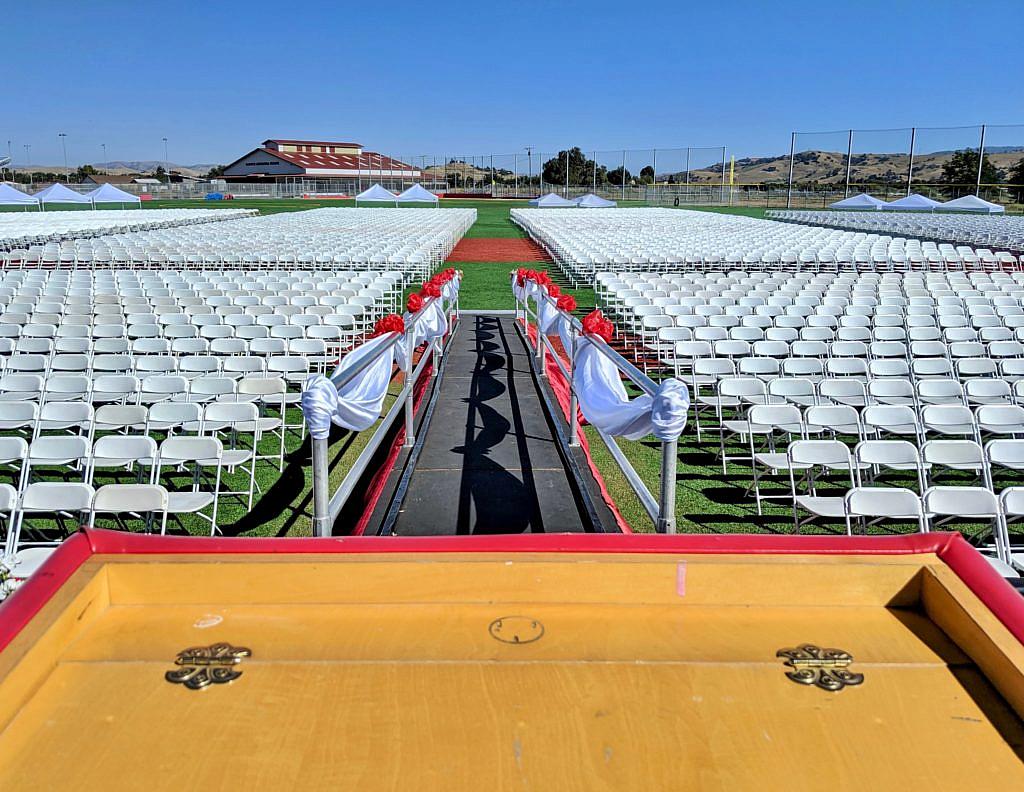
The view from the podium at the 2019 San Benito High School graduation
Photo by Becky Bonner.
This is the last in a three-part series about the social-emotional health of students in San Benito County. Read Part One and Part Two.
While the two largest school districts in San Benito County address suspension rates and special education, students with special needs have been failing through the cracks. Data shows that 12.8% of the county’s special needs students dropped out between the 2016-17 and 2018-19 school years, compared to 5.6% of the general student population.
San Benito High School’s graduation rate for students with disabilities has dropped since the 2016-17 school year from 74% to 67.5%. For the first time in three years, it’s falling under the state average of 67.7%.
Educators expect 2020-21 to show even worse dropout rates, as schools continue with distance learning in response to the pandemic.
Struggling to learn
Jose De Jesus Vazquez, 16, is climbing out of the crack he fell through during middle school. It will take a while, as he has to make up four years of reading levels. He said he fell behind because he was denied special education services. He’s struggled in high school, failing his first two years of English classes, which he had to make up in summer school.
Before birth, De Jesus Vazquez was diagnosed with agenesis of the corpus callosum (ACC), which occurs when the nerve that connects the two cerebral hemispheres does not develop properly.
Because of ACC, De Jesus Vazquez received services from birth until he began kindergarten, including physical therapy and a specialized teacher who worked with him.
Photo of Jose De Jesus Vazquez for his preschool class in 2009. Photo courtesy of Nora Vasquez.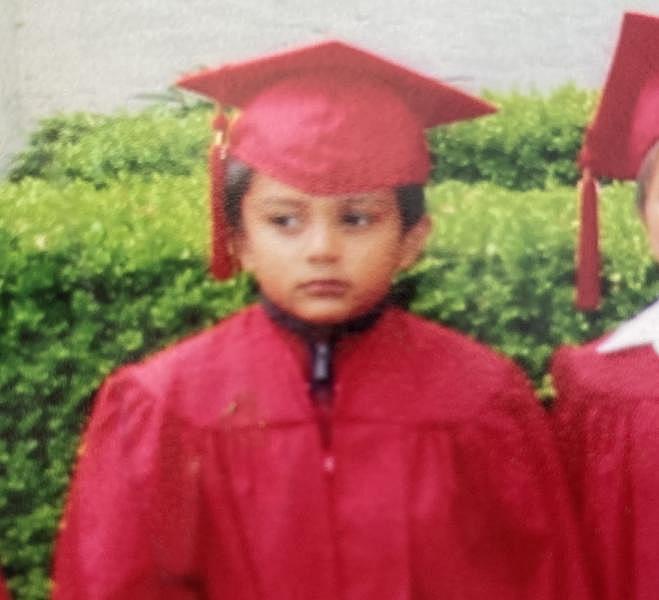
His mother, Nora Vazquez, said the Hollister School District denied him special education services from kindergarten through sixth grade because they claimed he was doing fine without them, compared to students with the same disability, and because he was part of the migrant program, which offers after-school tutoring.
With no extra support services for her son in kindergarten, Nora, a mother of two who works seasonally at a local nut shelling company, monitored his progress and noticed he was not learning at the same pace as other students. She continued to push for special education services to no avail.
When De Jesus Vazquez entered third grade, his mother again put pressure on the school to reassess him. This time she had a neurologist and a lawyer advocate for him. But he was denied services again and Nora was told she would have to wait another three years to reassess him.
She said she eventually gave up fighting the district to get her son the help she believed he needed because dealing with the school district and lawyers had become exhausting. However, Nora continued to be involved with school activities and participated in parent groups such as the parent advisory committee for the migrant program, of which she was president.
De Jesus Vazquez said that though he worked hard to keep up with his school work, he was frustrated and disheartened when teachers became upset with him for not keeping up with the other students.
“Cuando les preguntaba algo me estaba diciendo ‘Si tú no pones atención’ y muchas de esas cosas pero yo sí estaba poniendo atención,” he said. Though he is bilingual, he preferred to speak in Spanish. (When I would ask a question, she would say, ‘If you don’t pay attention’ and things like that, but I was paying attention.)
De Jesus Vazquez said after six years of struggling to learn—investing roughly four hours a day into his homework without the extra support he knew he needed—he lost the drive to go to school. He was in sixth grade.
Nonetheless, he wanted to prove to everybody that he could excel in his academics, and with the support of his mother he continued to push through.
“No fue hasta el séptimo grado que su maestra de la escuela se dio cuenta que él tenía un retraso en la lectura,” Nora said. (It wasn’t until seventh grade that his teacher noticed he was not reading at grade level.)
Disparities
Following an assessment in seventh grade, De Jesus Vazquez was approved for special education services detailed in his Individual Education Program (IEP), a legal document that identifies the support and services a special education student requires to meet his or her learning needs.
Despite having an IEP and the services that accompany it, Nora said she hasn’t noticed much improvement in her son’s reading level.
De Jesus Vazquez said distance learning has made things more difficult for him because he doesn’t get to personally know his teachers. He’s been struggling to adapt to their individual styles of teaching.
For education attorney Jean Murrell Adams, De Jesus Vazquez’s story is not uncommon. She told BenitoLink that low income families such as migrant workers lack the resources to hire lawyers and don’t know their rights when it comes to advocating for their children’s education.
“You can’t just dump kids into regular classrooms and expect them to succeed. They need certain support,” Adams said about students with disabilities.
Nora Vazquez with her two sons Jose De Jesus and Alejandro. Photo courtesy of Nora Vazquez.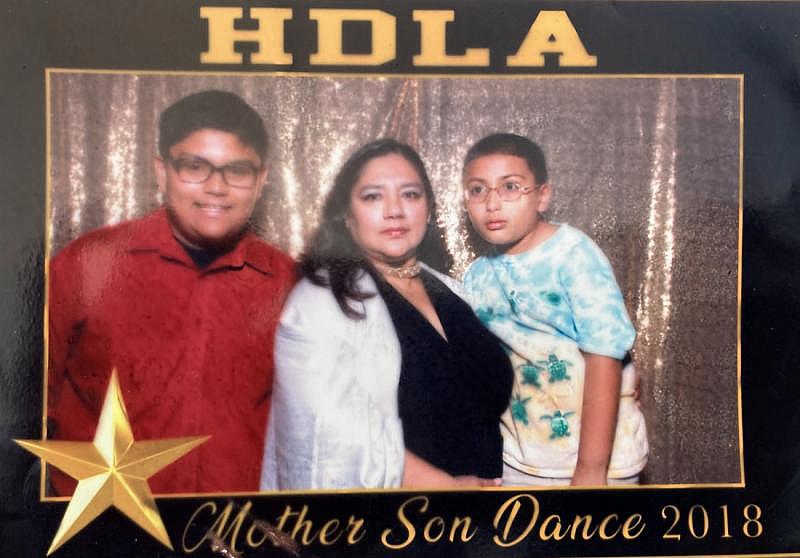
Nora, who gave hundreds of hours at Hollister Dual Language Academy as a classroom and special event volunteer, and as a member of the parents club, said she has witnessed disparities between the Latino and white student populations.
“Los niños anglosajones o los niños americanos les dan toda la facilidad y a los niños Latinos como que no. Debe de haber equidad pero a veces no la hay,” Nora said. (They give the Anglo-Saxon kids or the American kids all the facilities and not the Latinos. There should be equality, but sometimes there isn’t.)
The unequal treatment perceived by Nora is borne out in graduation rates. According to the California Department of Education, in the 2018-19 school year, 11.3% of San Benito County students with disabilities met University of California and/or California State University system admission requirements, compared to 43.7% of general education students. In addition, only 6.2% of students with exceptional needs obtained a certificate of completion, meaning they met the goals that were set on their IEP. No data for graduation rates was available for the 2019-20 school year.
Adams said misdiagnosing students with disabilities can have significant health implications as different diagnoses require different services. Without a correct assessment, it can lead to disabilities such as behavioral disorders not being addressed.
Help that doesn’t help
In some instances, having an IEP does not ensure students with disabilities receive the required services.
Daniel Leon, 23, was in special education under the label Other Health Impairment (OHI) since first grade for his attention deficit hyperactivity disorder (ADHD) and a learning disability. On top of that, he dealt with challenges outside of school.
Daniel Leon behind the San Benito High School gate that closes part of Nash Road during school hours. Photo by Noe Magaña.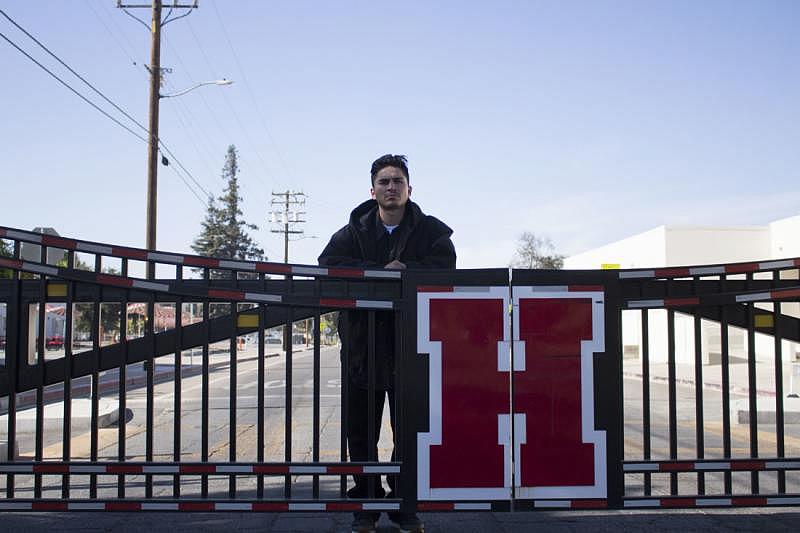
Leon experienced long periods of homelessness during his childhood; he attended about 10 different schools from kindergarten to fifth grade. He also jumped from school to school throughout his high school years.
When his family moved from Santa Clara County to Hollister in 2014 looking for some stability, his mother Shawna Padilla said she was turned away by San Benito High School when she tried to enroll him. She said a school official told her that the school did not have a class for him.
SBHS referred Padilla to San Andreas Continuation High School, just a few blocks away from her home, for her son’s junior year. There, Leon said he was put in a special day class.
“The teacher didn’t really help me that much, she just put me in [front of] a computer, that’s all I remember,” he said.
According to Leon’s IEP, he was supposed to receive specialized academic instruction three times daily for 45 minutes and vocational counseling monthly for 30 minutes.
Leon had a few classmates in that class, though there were times he was the only one who showed up. There were other times where he also opted to stay home. According to his attendance records, there were 35 days he did not attend school, in addition to the dozens of times he skipped a particular class.
“I just feel I wasn’t getting the help that I needed and I was just getting tired of the school. I didn’t really like the school,” Leon said. “I wanted to go to the high school, but they didn’t have a class for me so they put me in a special ed class at Santa Ana Opportunity School.”
Leon had a few classmates in that class, though there were times he was the only one who showed up. There were other times where he also opted to stay home. According to his attendance records, there were 35 days he did not attend school, in addition to the dozens of times he skipped a particular class. “I just feel I wasn’t getting the help that I needed and I was just getting tired of the school. I didn’t really like the school,” Leon said. “I wanted to go to the high school, but they didn’t have a class for me so they put me in a special ed class at Santa Ana Opportunity School.”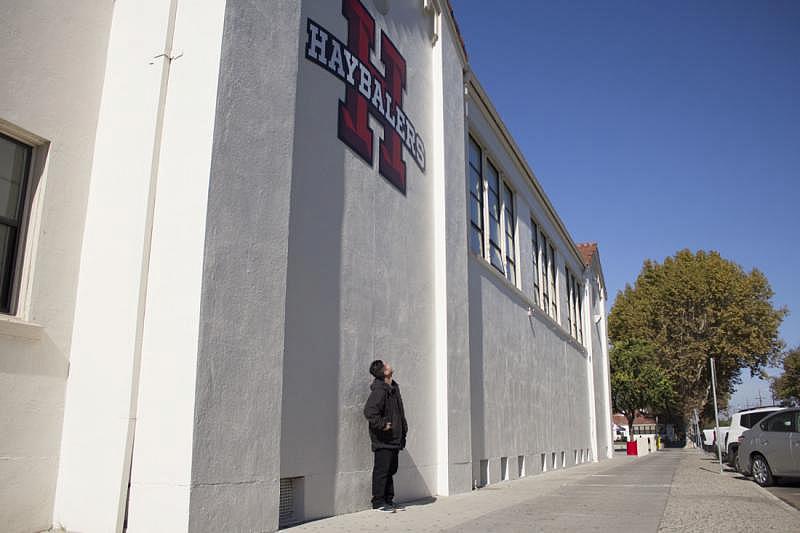
Paulette Cobb, director of special education at San Benito High School, said that while she could not share personal information about Leon, Padilla’s claims did not sound like the administrative practices of the school. Cobb said SBHS did follow procedures in providing Leon the services outlined in his IEP. She said that often when a student is transferred from an alternative school in another district, it’s common for the student to continue their education in a local alternative school, unless parents ask otherwise.
“I make sure there are services for that student here or at alternative ed,” Cobb said, adding that students attend San Benito High School if they need more intensive services that are not available at alternative schools.
But Padilla said this was not the case for her son. While the administration was aware the class at Santa Ana Opportunity School was discontinued, she said she was not notified that attending San Benito High School was an option.
According to Leon’s May 21, 2015, IEP meeting notes, “Daniel may be able to fit better in a life skills class. Will he be here at [Santa Ana Opportunity School] next year? Contreras stated that there may not be a class next year. She is not sure.”
Runaround
Before the end of the 2014-15 school year, Leon’s teacher, Suzanne Contreras, notified Padilla that Santa Ana could not offer the class the following year and recommended Leon relocate out of the county so he could receive the services he needed.
Padilla moved Leon in with her sister in San Jose and re-enrolled him at Broadway High School, a continuation school, where he was placed in a special day class for core credits and also took electives such as art in a mainstream setting, according to his school records.
“I kept asking for services here [in San Benito], but they kept telling me we moved into a poor county,” Padilla said. “It’s been really frustrating to get services.”
Five years after her last dealings with the school system, Padilla encountered problems when she requested copies of her son’s records.
She said she was unable to receive the information from San Benito High School, Santa Ana Opportunity School or the San Benito County Office of Education Special Education Regional Programs department—all pointed at each other as the ones having the records.
Padilla received the records on Oct. 16 from the Special Education Regional Programs office on Line Street, though they had directed her back to San Benito High School three days earlier.
Disadvantaged
Daniel Leon outside of Westside Liquors before the start of his shift. Photo by Noe Magaña.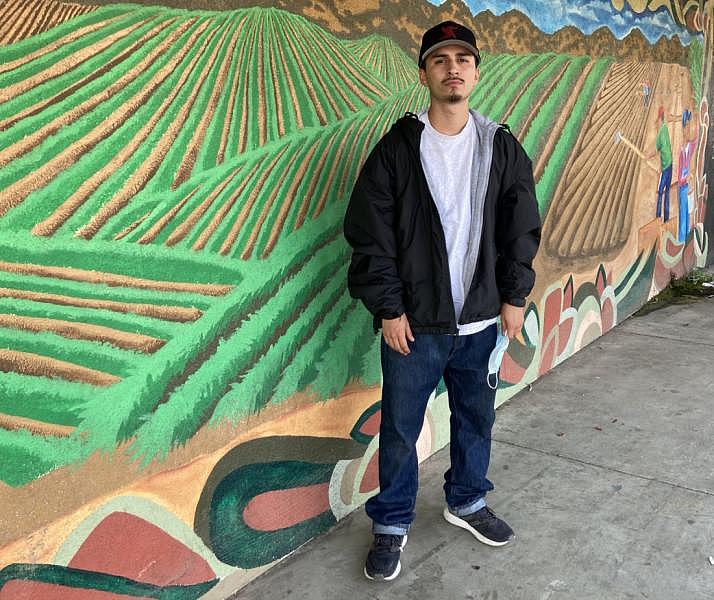
According to the California Department of Education, in the 2014-15 school year, 50.7% of San Benito High School’s students were considered socioeconomically disadvantaged, a classification which includes students who are migrant, foster, homeless or have parents who did not receive a high school diploma. In the 2019-20 school year, 55.4% of SBHS students were considered socioeconomically disadvantaged.
After several years at Broadway High, Leon reached the age limit of 21. He was unable to graduate and moved back to San Benito County. Despite the setbacks he endured, Leon pursued his general education diploma before the COVID-19 shutdown put those plans on hold. Leon recently landed a job at a liquor store.
Padilla said the only time she saw her son excel in school was when he was placed in a foster home and enrolled in a specialized school in Los Altos at the age of eight.
“There was a lot of support, a lot of people at the table,” Padilla said. “I saw the difference in education between the wealthy and a poor area in San Jose.”
[This story was originally published by Benito Link.]

